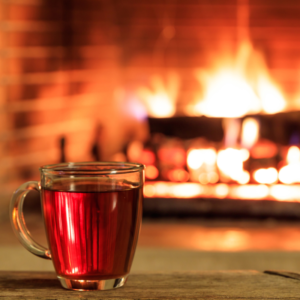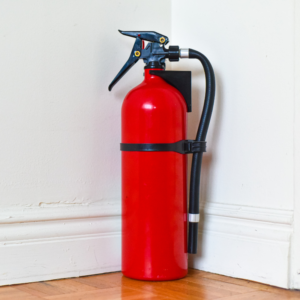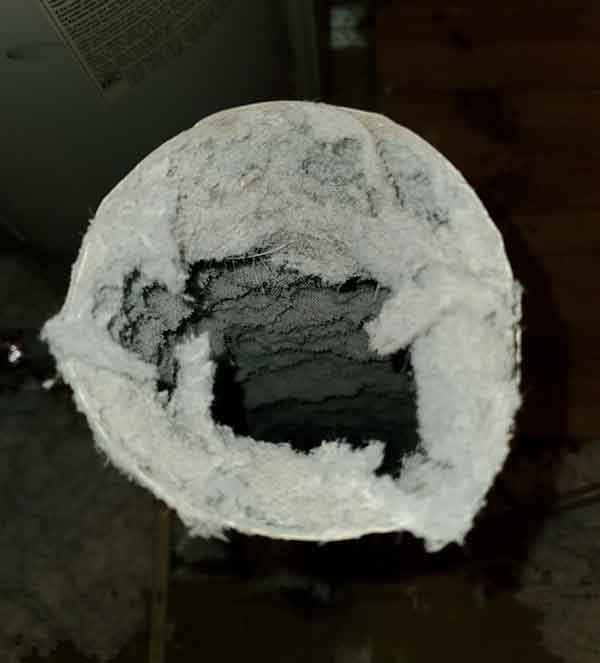URGENT!
Due to the weather, we are experiencing intermittent power outage and loss of internet. Please expect delays and or rescheduling of appointments during this time. We will reach out to you as soon as we can. Stay warm and stay safe!
Peaceful ambiance? Cozy comfort? Festiveness? Warmth?
A fire flickering in the fireplace checks all these boxes.
A home fireplace is an inviting asset, but it should always be used with proper caution so it’s a source of enjoyment, rather than worry. Thankfully, armed with a little knowledge and awareness, this is no problem.
Not all fires are equal. Incomplete combustion or inadequate air supply can generate a smoky fire, causing creosote and soot to build up in your chimney. Here are ways to avoid this:
You want your fire to be controlled and contained. This means taking measures to keep all embers in the fireplace and avoiding putting any combustible items where they could get too hot or be exposed to sparks.
 Use small pieces of wood. This will help ensure your wood is well-seasoned and burning cleanly, but also minimize chances of embers escaping as wood breaks down during a fire. Along these same lines, don’t overfill your fireplace.
Use small pieces of wood. This will help ensure your wood is well-seasoned and burning cleanly, but also minimize chances of embers escaping as wood breaks down during a fire. Along these same lines, don’t overfill your fireplace.Brick and mortar are durable, and chimney systems are built for longevity. With proper care and maintenance, they should serve you for a long time.
There are some basic safety tips everyone should know before lighting a fire in their home.
 Invest in smoke alarms and carbon monoxide detectors. Check them monthly and replace batteries annually or if they fail a monthly check. Also, be sure your family knows how to exit the home and where to meet if they do ever go off.
Invest in smoke alarms and carbon monoxide detectors. Check them monthly and replace batteries annually or if they fail a monthly check. Also, be sure your family knows how to exit the home and where to meet if they do ever go off.We’re proud to be your partners in bringing the warmth and ambiance of a fireplace into your home and maintaining it for years of enjoyment. If you have questions about fireplace care, safety, or upgrades, give us a call today!
Reach out to our Houston location at 281-786-0507, our Beaumont location at 409-240-0013, or you can contact us online. We’d love to hear from you soon.
Keeping the focus on safety
Our clients’ safety is important to us, and at Lords Chimney, we want to do everything we can to help you minimize the possibility of fire hazards in or around your chimney system, from regular chimney maintenance to necessary repairs. That also includes helping you develop short-term and long-term fire safety plans that add up to a cleaner and better-performing system.
Maintenance Sets The Stage

This list of smart practices will help you continue using your heating appliance as safely as possible.
Every Time You Use Your Fireplace
Use the right fuel
Wet or green wood results in an increase in creosote in your flue, and more creosote means a bigger chance of creosote ignition. Use kiln-dried or seasoned firewood (or make sure you dry your own wood for at least a year before using it) — that helps you achieve the optimum small, hot fire, creating the lowest levels of creosote. Stay away from burning trash, Christmas trees, cardboard boxes or anything else that isn’t seasoned firewood, too — and never ever try to speed up lighting your fire by using any kind of flammable liquid.
Don’t leave your fire unattended
If you’re burning wood, it takes a while for the fire to thoroughly extinguish. Don’t leave a smoldering fire alone — if sparks or embers get out of the firebox or another problem arises, you need to be there to handle it.
Use a spark screen
Fireplace screens are affordable and useful — placed in front of the fire, they can create a barrier between flames/embers and your living area and the people and pets in it.
Keep things clean
Make sure you clean wood ash regularly, in the right way: Deposit ash in a metal bucket, and allow it to cool completely before disposing of it a safe distance away from your home. Whatever fuel you’re burning, keep the area around your fireplace or stove clean — keep a good distance between the appliance and anything flammable, from furniture and window coverings to decorative items.

Things You Should Schedule Annually
Chimney sweeping
Creosote will build up as you use your wood fireplace or stove, and it needs to be regularly removed from your flue for both safety and performance reasons. A cleaner flue is a safer and a more efficiently venting flue, and Lords Chimney can help.
Chimney inspections
If something goes wrong in your chimney system, you want to know about it — damaged parts and components can lead to leaks and water damage, dangerous carbon monoxide leaks and fire hazards. So keeping up with your recommended annual chimney inspection is important.
If a cracked flue liner, third stage creosote or any other issue is limiting your chimney’s safety and efficiency, Lords Chimney can find the problem and suggest and complete the work necessary to fix it.
Don’t Forget About Your Dryer Vents!
We talk a lot about fire safety associated with fireplaces, stoves and chimneys, but your dryer vent needs your attention too. Lint-clogged dryer vents can become a serious fire hazard — according to estimates from the National Fire Protection Association, dryers or washing machines were involved in nearly 17,000 home fires in 2010, and the most prominent cause of those fires was a failure to clean.
As you use your dryer, lint slowly builds up along the ducts, and over time, that build-up can begin to constrict the vent. That blockage allows heat to build up, and since lint is extremely flammable, that heat can cause it to ignite.

Keeping your dryer vents clean limits that possibility — and Lords Chimney can help with dryer vent cleaning services.
If you have any questions about safer fireplace, stove and chimney practices – or dryer vents – Lords Chimney is always here to help. Just give us a call!
Here at Lords Chimney, we take pride in putting the safety and satisfaction of our customers above it all. You won’t find experienced, professional sweeps like ours anywhere else, and we can provide you with the knowledge and advice you’re looking for to have the safest and most enjoyable holiday season yet.
Now, one key ingredient in hosting a successful Christmas gathering is a warm, blazing fire in the fireplace. That is unless your fire-building strategies always prove to be less than successful. If you want to avoid a smoke-filled living space, along with the countless other threats that accompany a poorly constructed fire, read up on some of our guidelines below.

First things first, be certain to get your annual inspection scheduled before lighting any fires and have a sweeping completed if excess creosote was spotted in your flue. By getting an inspection done every year, you guarantee more efficient fires, and you avoid countless potential threats, such as house and chimney fires, carbon monoxide exposure, gas leaks, smoke back-up, and more.
Just be sure you book this maintenance with a team of CSIA Certified Sweeps to ensure you get the most knowledgeable and in-depth analysis possible. The crew here as Lords Chimney has trained with the CSIA, and we work with a number of other reputable organizations, as well, such as the NFI and the NCSG. We would love to set you upright, so book your inspection with our experienced staff today!
Now, what you use for fuel plays an integral part in how efficiently your fires burn, and it has an impact on the health of your chimney, too. It’s essential that you burn only well-seasoned firewood in your fireplace and nothing else besides it. Although it’s tempting to throw trash in there from time to time, especially in a time of year where you’re using a lot of wrapping paper, paper plates, plastic silverware, and more, but burning these materials increases the amount of creosote that forms in your flue, and it can create some pretty smoky fires, too.
It’s also important to avoid burning wet or unseasoned wood. If your fuel hasn’t adequately dried out, then acidic water will break down your chimney’s interior system, and your fires won’t burn as nicely, either. If you want heat and efficiency from your fireplace, then well-seasoned wood is the only thing you should be burning!
How do you know that your logs are ready for use? Well, if you season your own wood, it should be fine to burn after about six months of airing out in a well-protected, but open area outside. (Be sure to store it off of the ground, too!) If you are purchasing fuel, then some key characteristics to watch out for are.
Ever light a fire only to have smoke start pouring into your living room? This is unhealthy, uncomfortable, and it can leave you with an odor that is hard to erase. It’s a common mistake for homeowners to forget to open their damper before lighting things up, so be sure yours is open before getting your evening going.
Also, if your throat damper is rusting, eroding, or getting stuck all the time, consider upgrading to a top-sealing damper. These offer an effective seal with a rubber gasket, and they work alongside your chimney cap to keep out animals, downdrafts, and excess debris. Ready to make the switch? Talk with our team today.
It’s a good idea to light a roll of newspaper and hold it in your flue for a bit to get things primed and ready before lighting your fire. Why is this recommended? Well, otherwise you’ll be fighting the cold air in your chimney, which can overpower any smoke going up and push it back into your home. If you heat things up ahead of time, you could save yourself a lot of stress and hassle.
A fire in your home means there is always an increased risk of experiencing a gas leak, house fire, chimney fire, and more. Be sure you know the best ways to avoid a disaster in your home and have a plan in place should a fire occur. Map things out ahead of time and have your family practice different escape routes. It’s also important to pick a meeting spot outside of the home so that everyone knows where to meet up and check-in in the event of an emergency.
Also, remember to never leave a fire unattended. When it’s late and you’re tired, it may be tempting to simply fall asleep and let the flames die out on their own, but this has caused many accidents. It simply isn’t worth the risk. We also urge all of our customers to invest in multiple smoke and carbon monoxide detectors, as these are often the first or only things to offer any warning signs of danger.
If your chimney is in need of care, then there’s no time to lose. Count on the qualified and experienced technicians at Lords Chimney soon. We serve the counties of Harris, Fort Bend, Montgomery, Austin, Galveston, and Wharton, and we would love to help you out. Call today!
Nothing beats the modern convenience of a great working dryer. In less than an hour, you’re provided with clean, warm clothes, so you can face whatever the day has in store for you. However, what if things aren’t working properly? When you are forced to run cycle after cycle in hopes of getting your laundry completely dry, something isn’t right.
At Lords Chimney, we can make sure this doesn’t happen to you. We are CDET certified by the CSIA to clean dryer vents in homes all throughout our service area. We have helped countless customers feel safer and more at ease with this service, and we want to help you out, too!
Learn more about how your venting system works. Then, give us a call today, so that we can give your more information about just what it is that we can do for you. We’re excited to help you out soon!
Once heated air works its way through your dryer, it needs somewhere to escape. This air passes through the lint screen, then goes through a series of ducts, where it eventually ends up outside, safely away from the interior of your home. This is one reason why cleaning that lint trap after every drying cycle is so important!
While this process seems easy enough, the lint trap unfortunately cannot catch every piece of lint that comes its way. As various pieces escape through, they enter your duct system, where they get trapped until they are physically removed by a certified technician. It is important to have this excess debris cleaned out on a regular basis (at least once per year).
Clean vents are important for multiple reasons. First and foremost, dirty vents can trigger fires. Thousands of fires occur every year due to home dryers and the majority of these are caused by clogged up venting systems. With something this serious, it’s not worth taking any chances. Have your vents cleaned out, so that your home stays as protected as possible.
Fires aren’t the only threat. Hazardous toxins can easily back up into your home when they are not given the chance to escape outside. With nowhere else to go, they turn back in the air you and your family breath in every day. This can lead to some serious illness, and it has landed many people in hospitals over the years.
It’s clear that good venting is vital to keeping a safer home. You’ll want trained and experienced techs on the job! Turn to Lords Chimney, so you know that every step along the way will be taken care of to the highest standards possible.
When you’re ready, give us a call at 281-497-4000. We can’t wait to help you out soon. Count on us for all of your fireplace, chimney, and dryer vent needs!
Direct vent gas fireplaces have grown in popularity in recent years. With more realistic looking flames, a multitude of style options, and incredible ease of use, gas fireplaces allow families to enjoy the ambiance and warmth of a fire without the hassle and work associated with wood.
While gas fireplaces are more convenient and easy to use, they still have safety risks associated with them. A primary concern with gas fireplaces – especially in families with young children or pets – is the risk of burns associated with the hot glass fronts of the fireplace units.
Beginning on January 1, 2015, all newly manufactured gas fireplaces and stoves with glass fronts will be required to include an installed protective barrier. This will apply to all appliances that have a glass surface temperature of 172 degrees or higher when in use.
“While gas fireplaces, stoves and inserts are a great asset to any home, the glass can become very hot during operation and stay hot long afterwards, creating a potential burn hazard,” said Hearth, Patio, and Barbeque Association president Jack Goldman. “In the past several years, there have been reports of burns involving young children and others who may not been aware of the potential risk of touching the hot glass on gas fireplaces, inserts and stoves. While we believe these incidents are few, even one is too many. We believe the new safety standard will provide greater protection to young children and others with special needs.”
This new standard was originally approved in 2012 by the American National Standards Institute. The U.S. Consumer Product Safety Commission worked with the fireplace and hearth industry to implement the standard in an effort to protect families from accidental burns. The standard will apply to all units manufactured after January 1, 2015. Retailers may continue to sell units manufactured before this date that do not meet the new safety standards.
If you have an existing gas appliance, there are a number of things you can do to protect yourself and your family from accidental burns. These common sense safety tips can help keep everyone in your home safe.
There are a number of safety products available to homeowners who already own gas appliances. Protective barriers or screens are the easiest and most common safety precaution. Safety screens come in a variety of styles and can be attached directly to the front of the fireplace or left as freestanding screens. Likewise, baby gates or barriers can be used to keep children and pets away from the fireplace when it is in use.
When installing aftermarket screens directly to the front of your hearth, please be aware that they may change the functionality of your fireplace. Check with a fireplace professional before installing something directly to the fireplace.
If you have questions about making your gas appliance safer, contact Lord’s Chimney today. Our expert staff is highly trained and ready to make sure you can enjoy your gas fireplace while keeping your family safe.